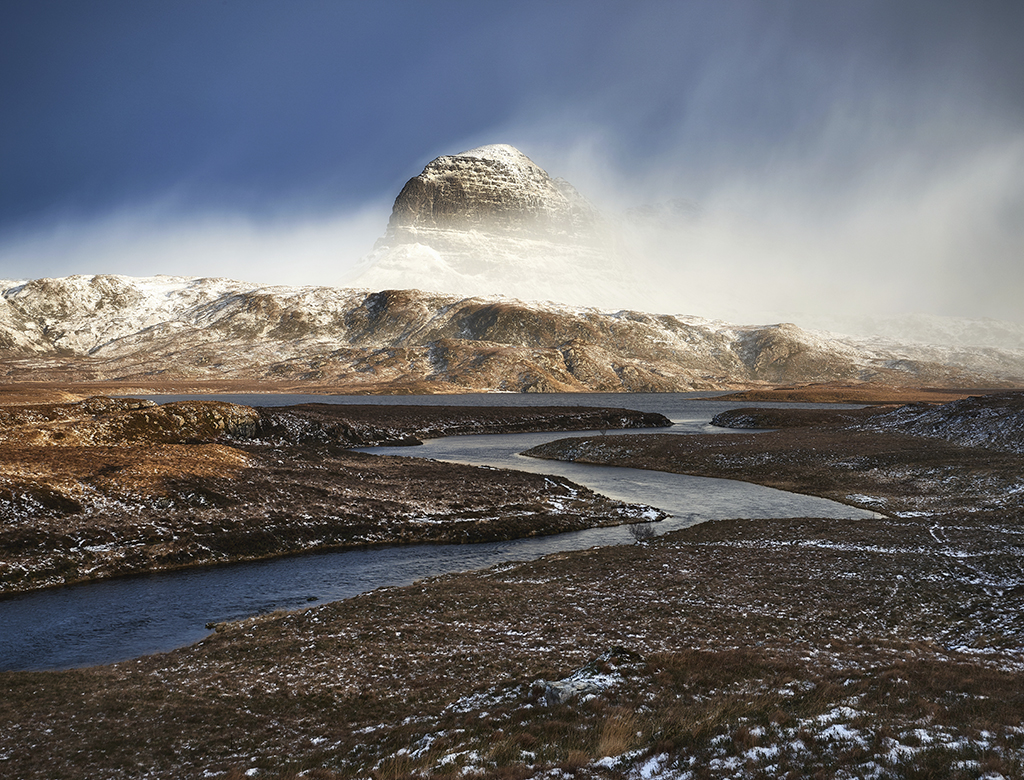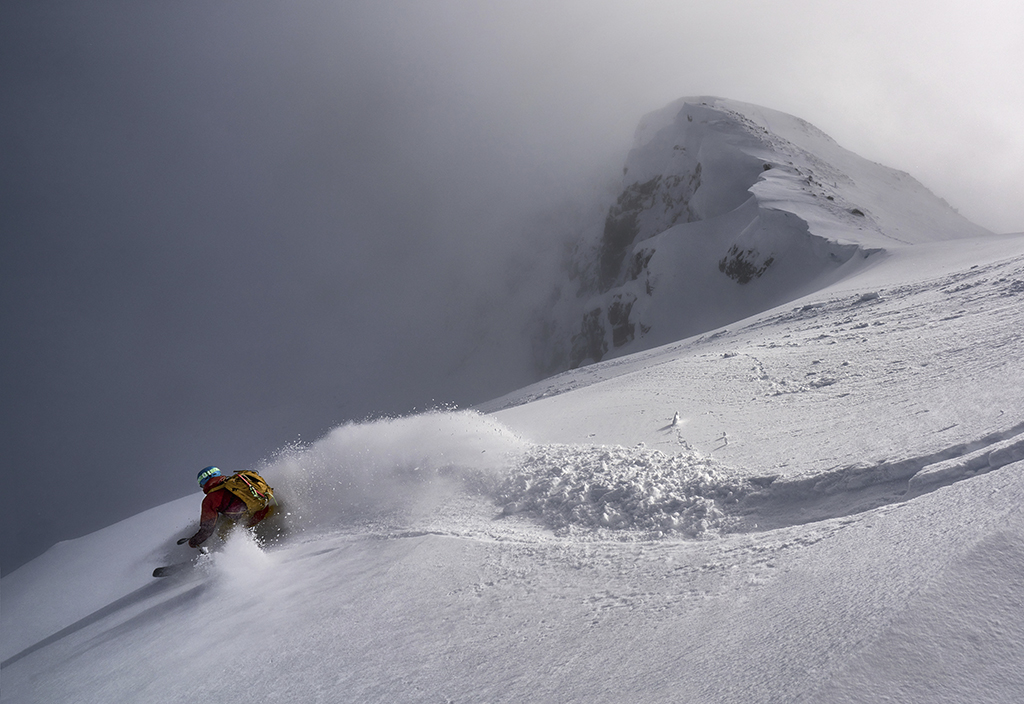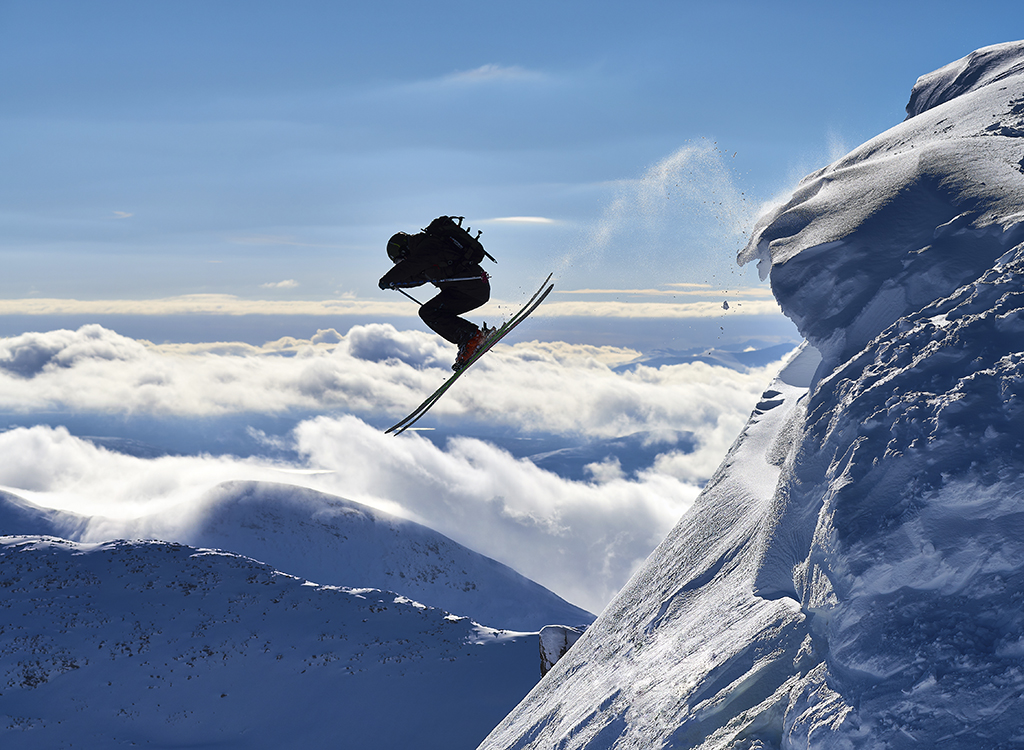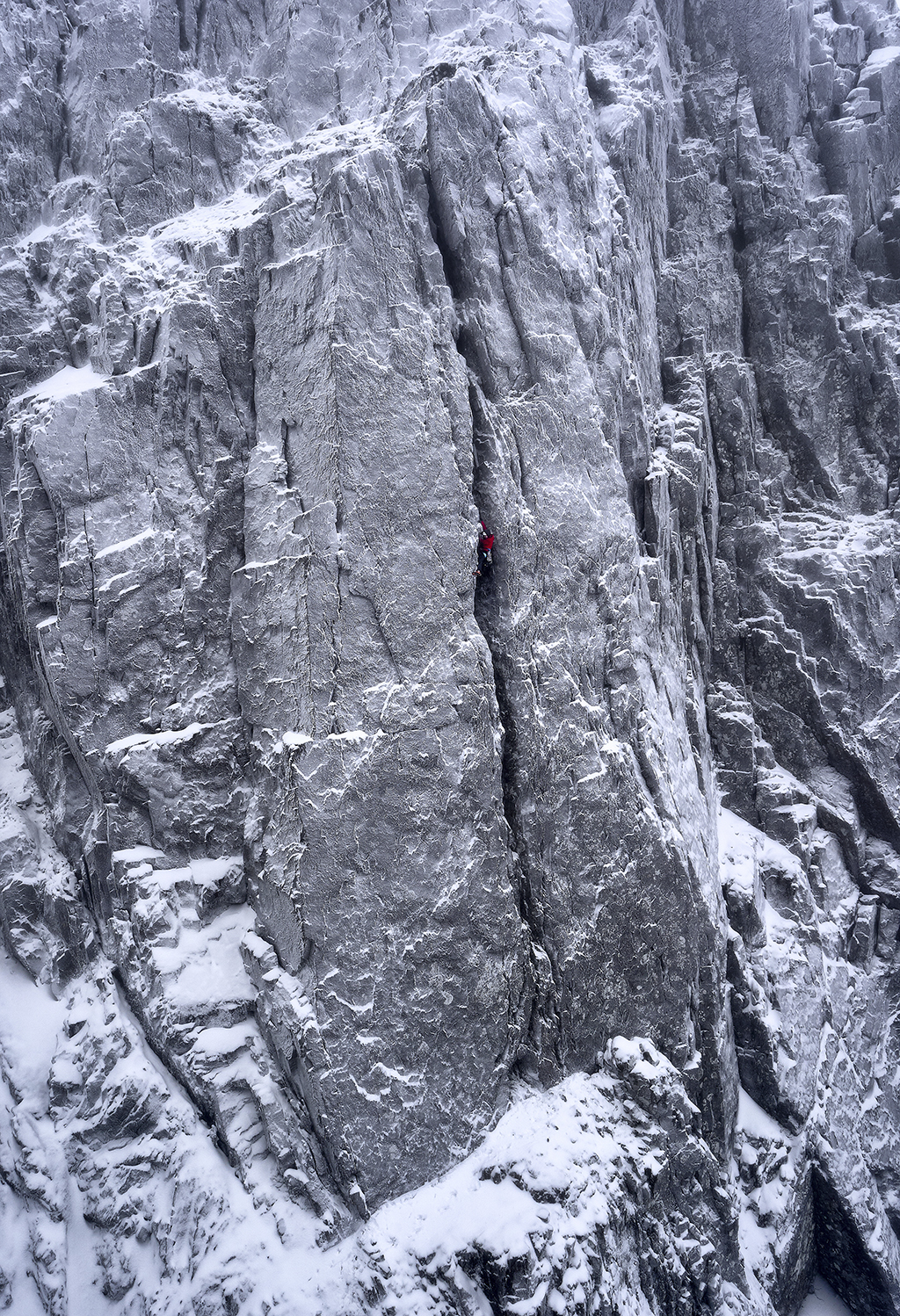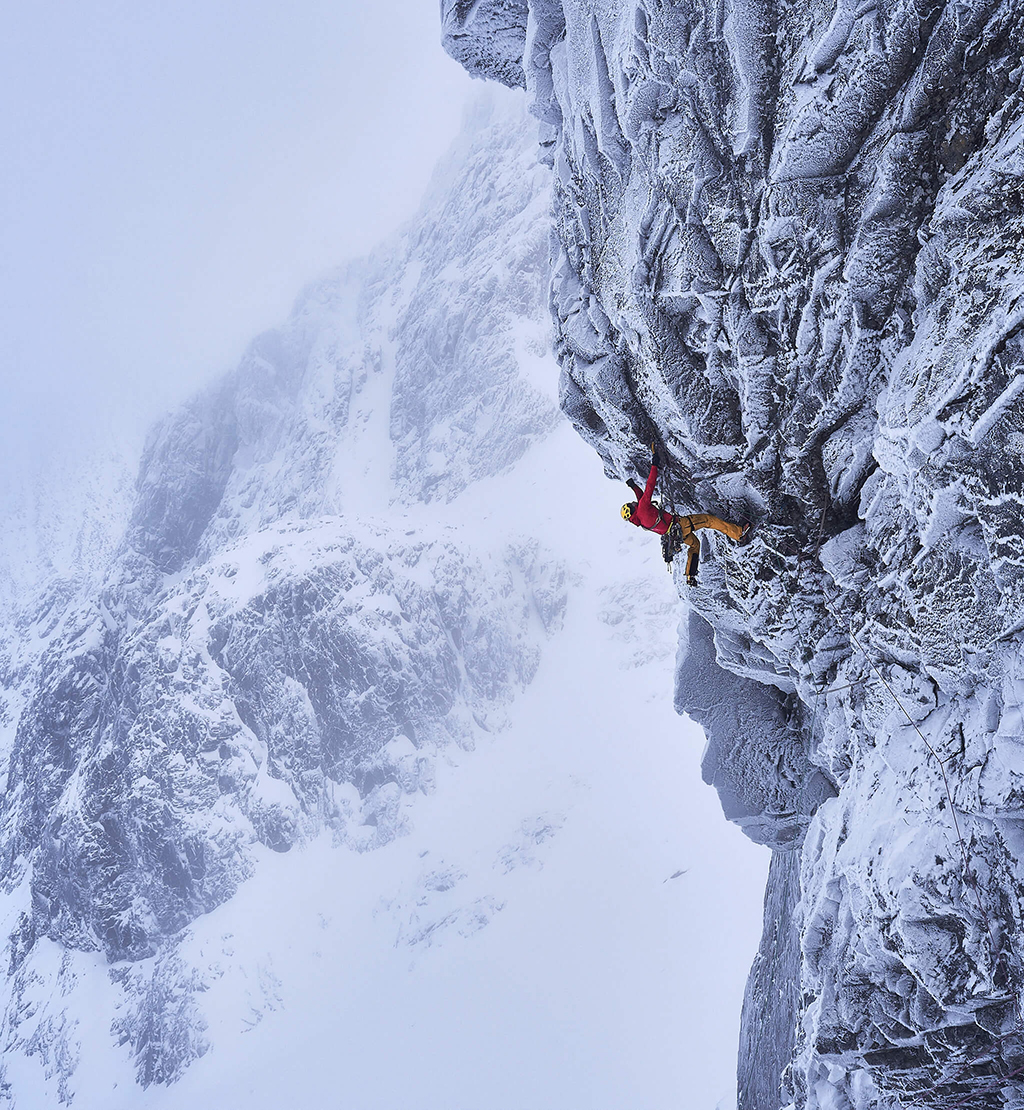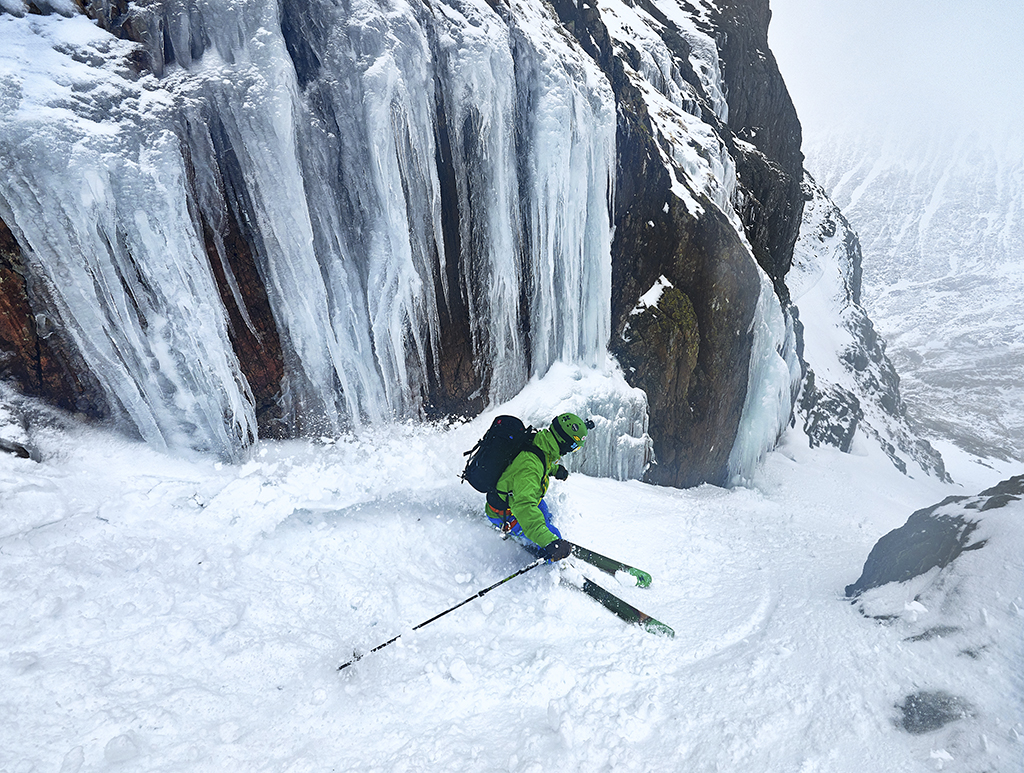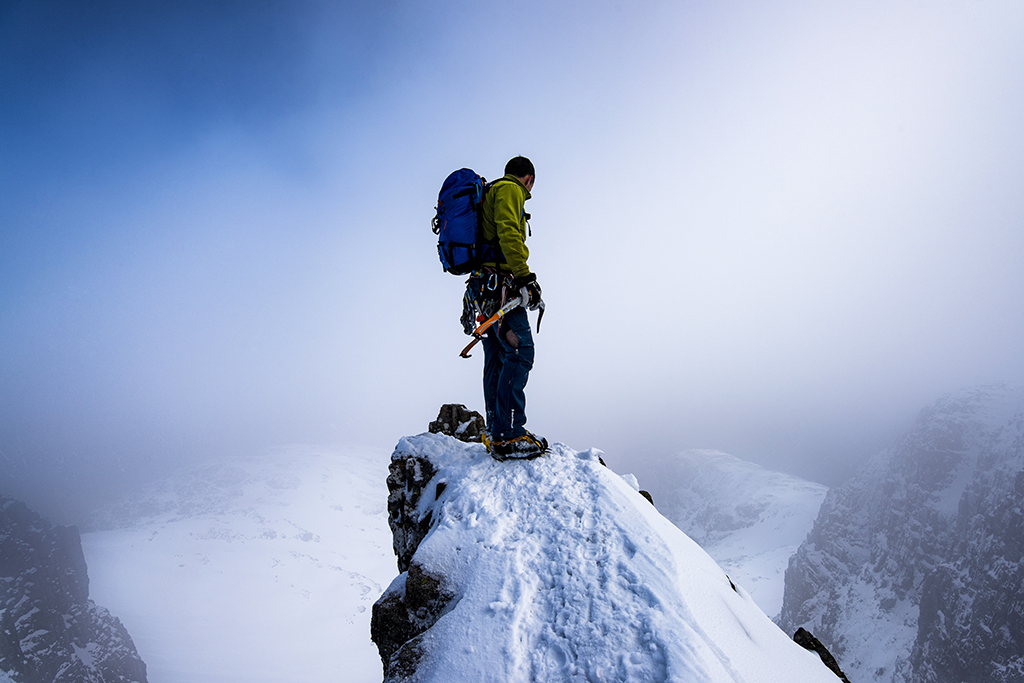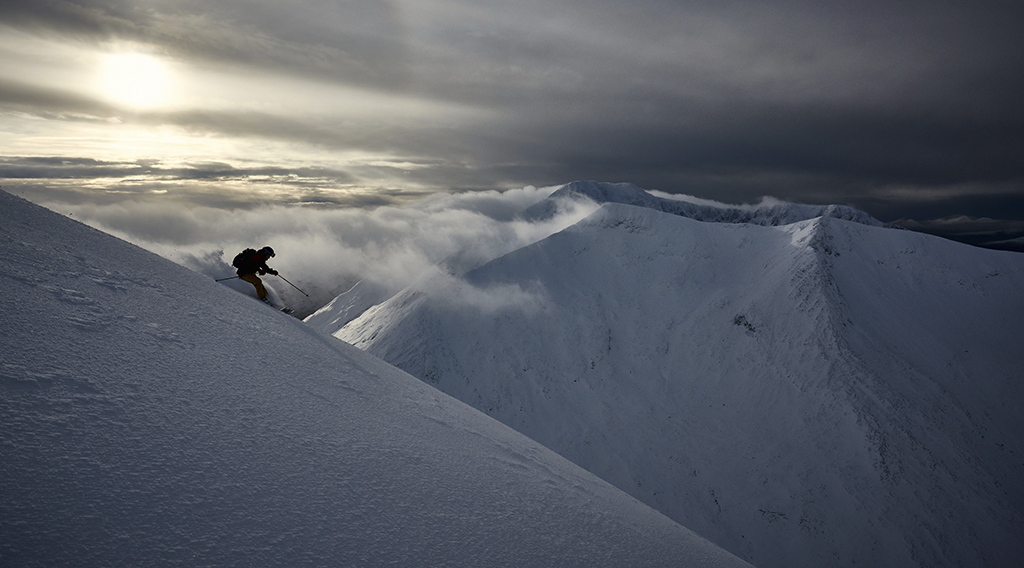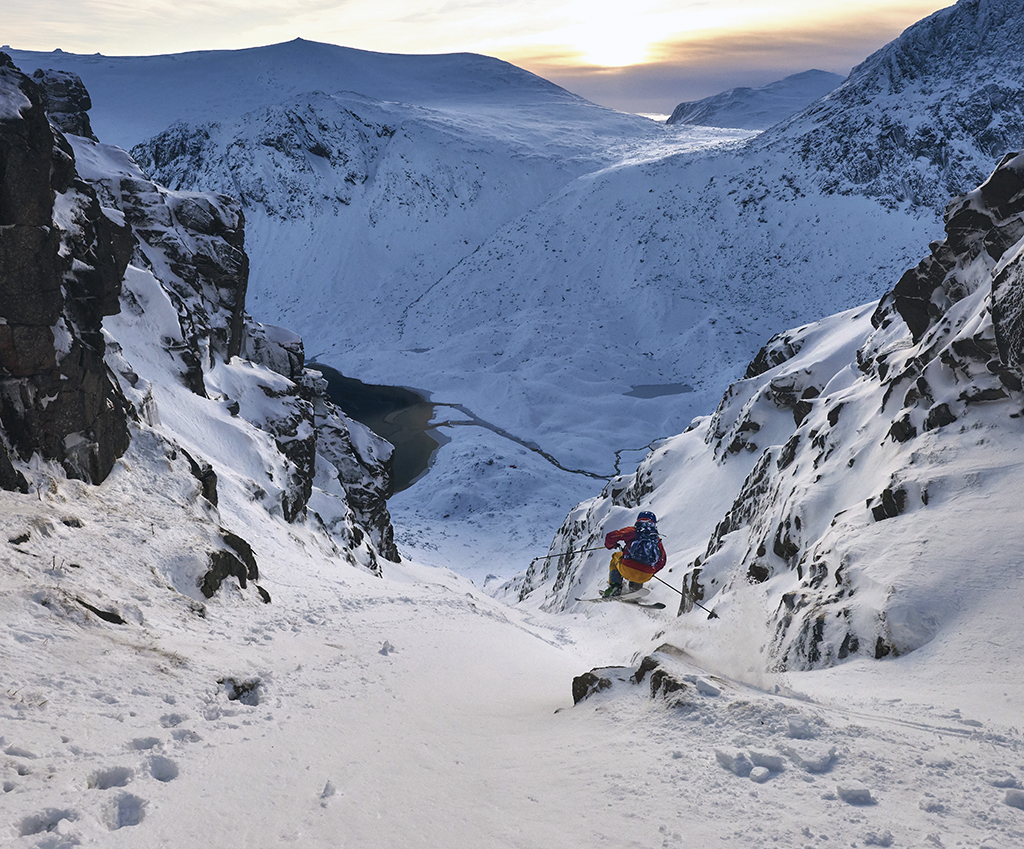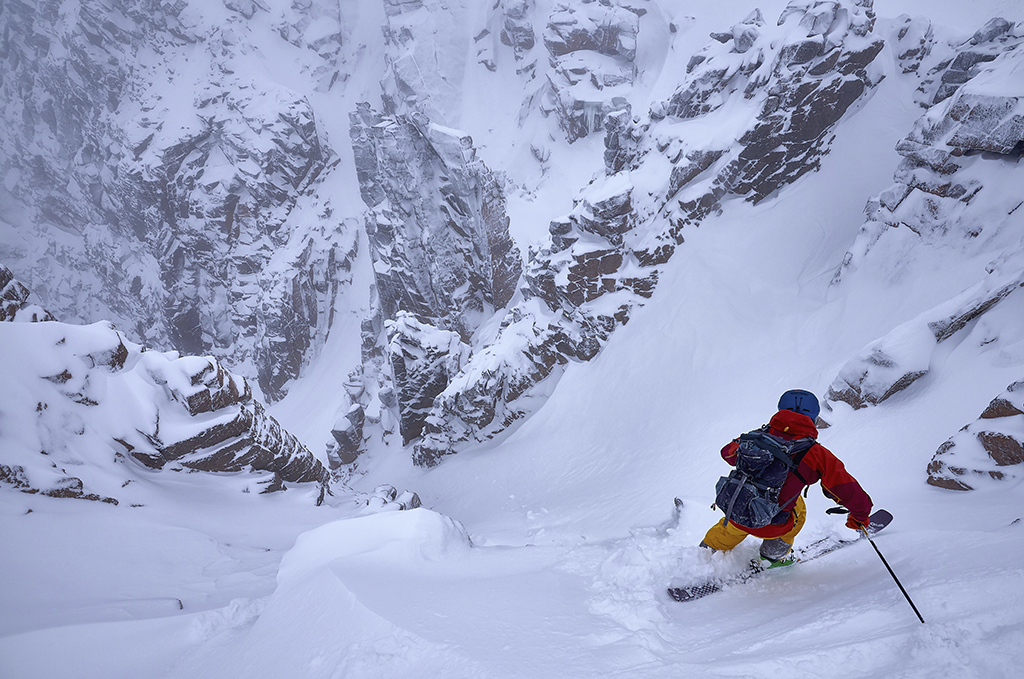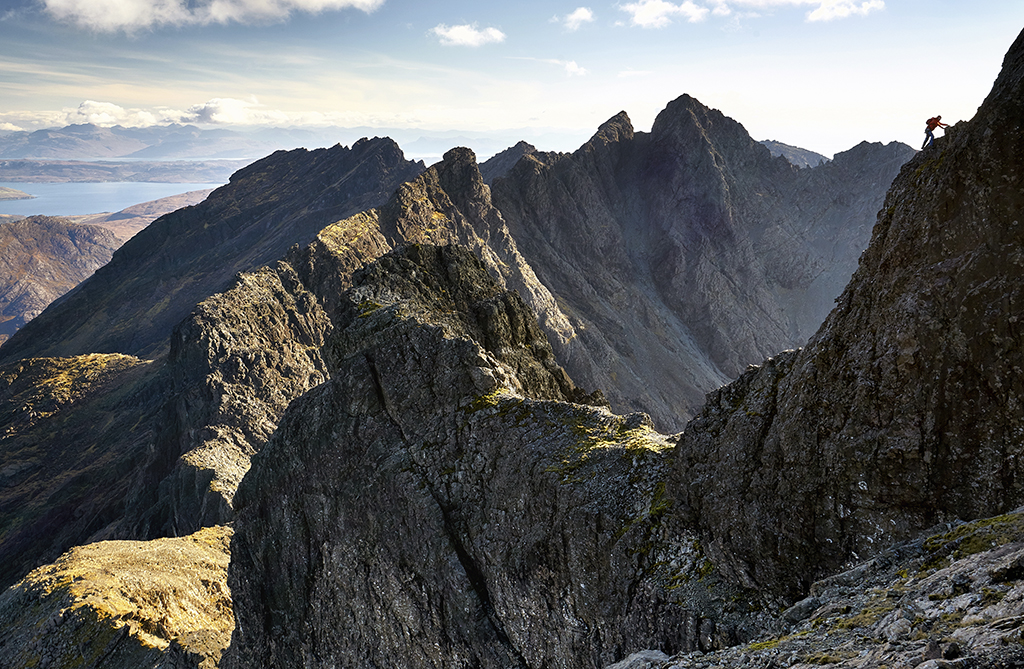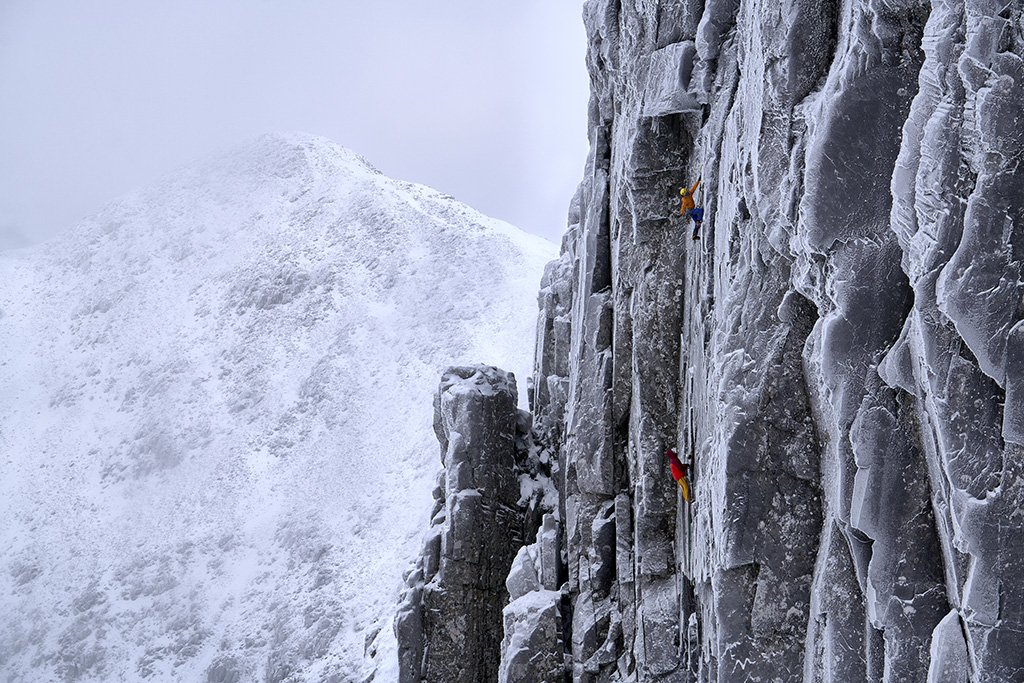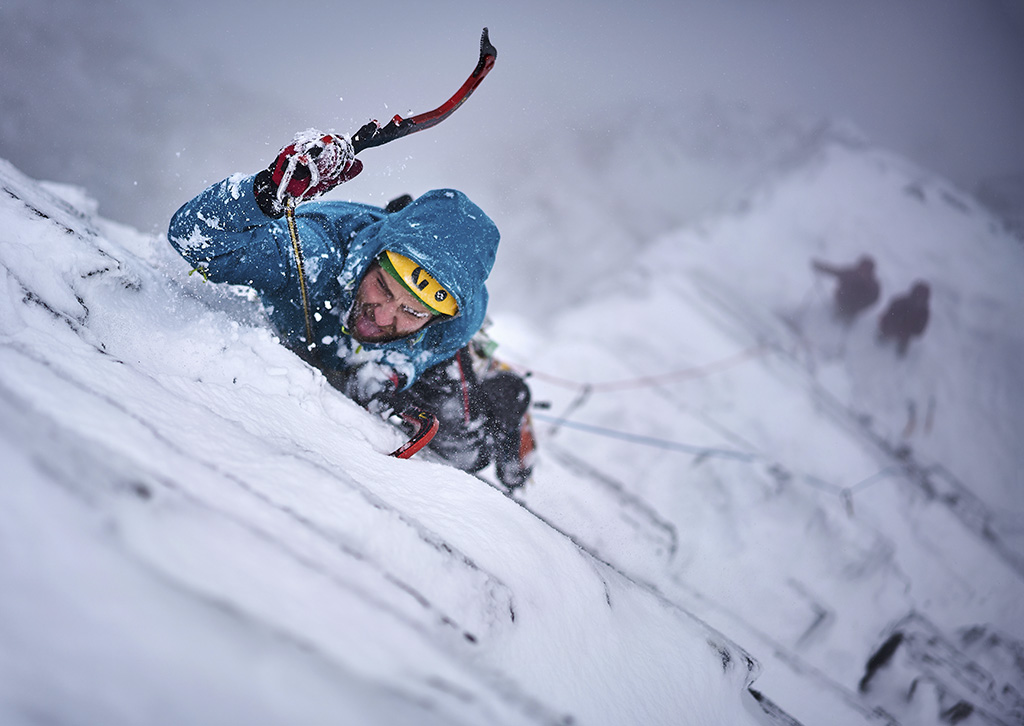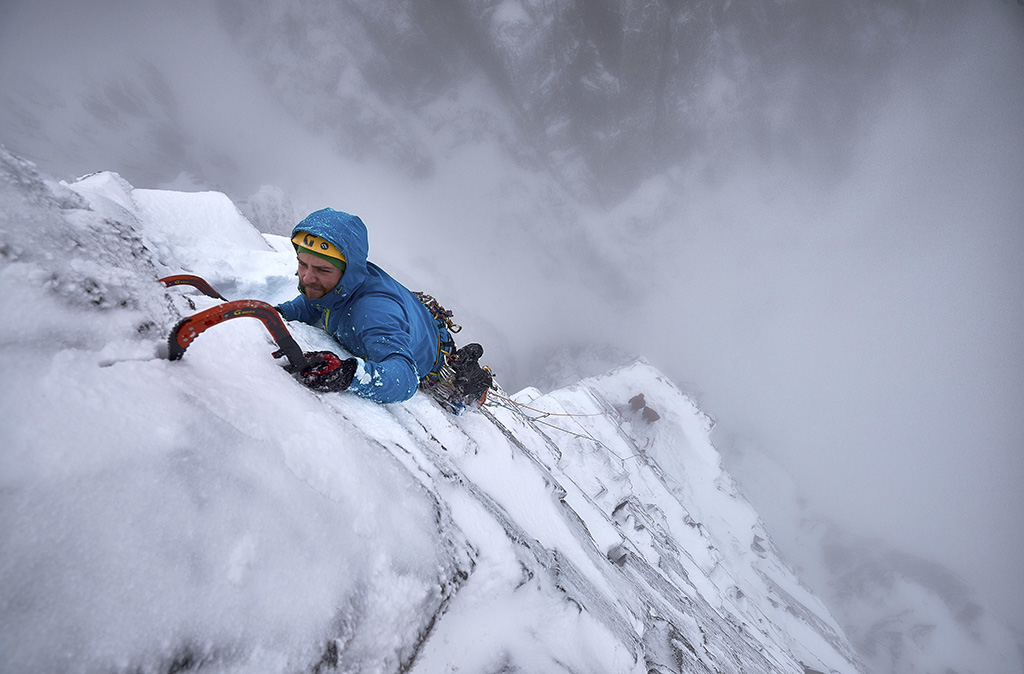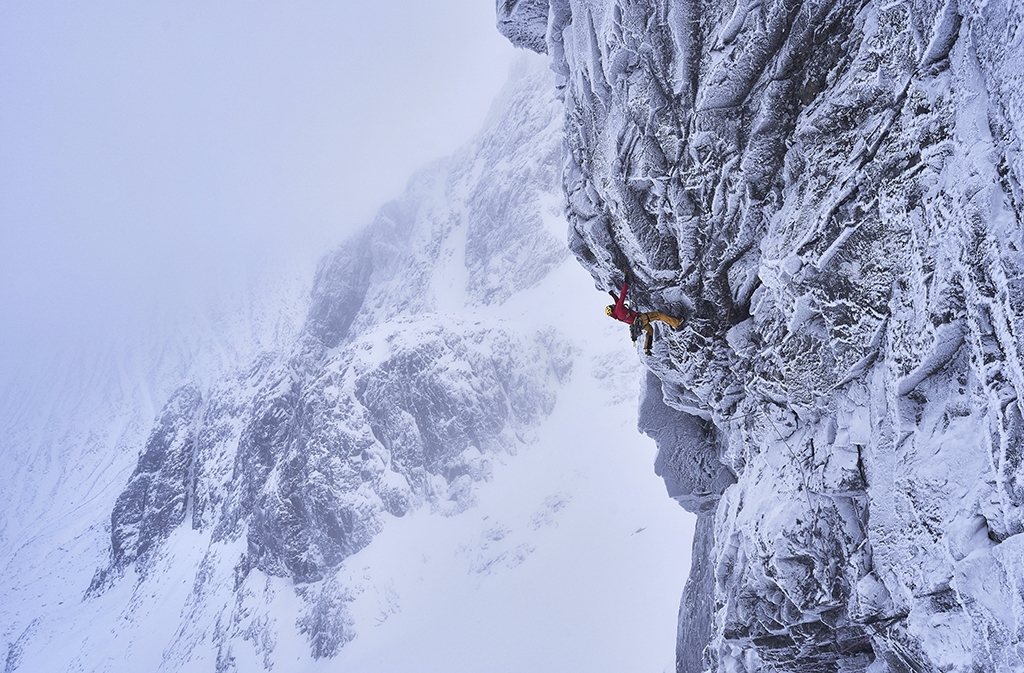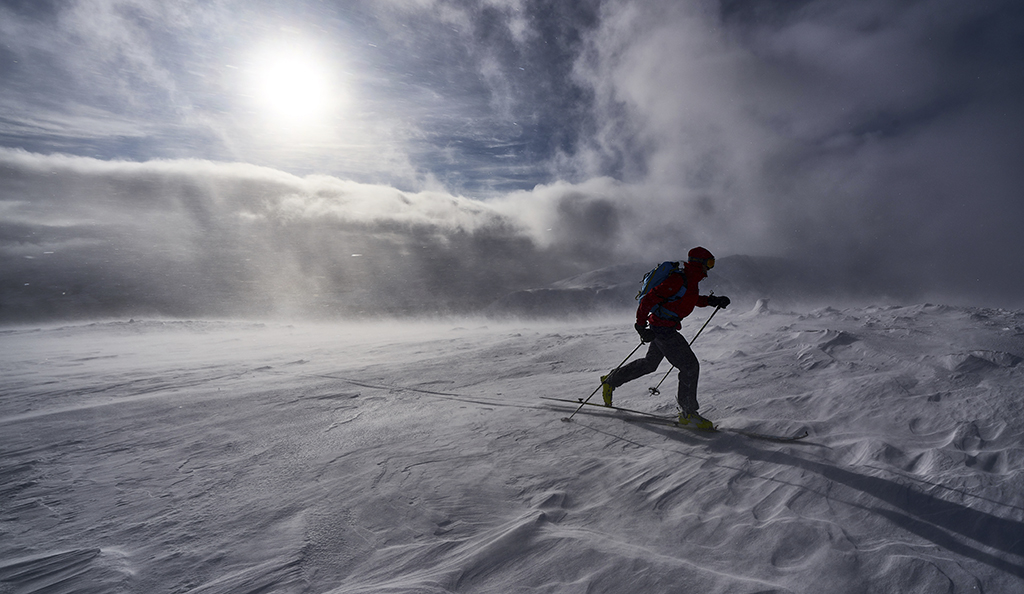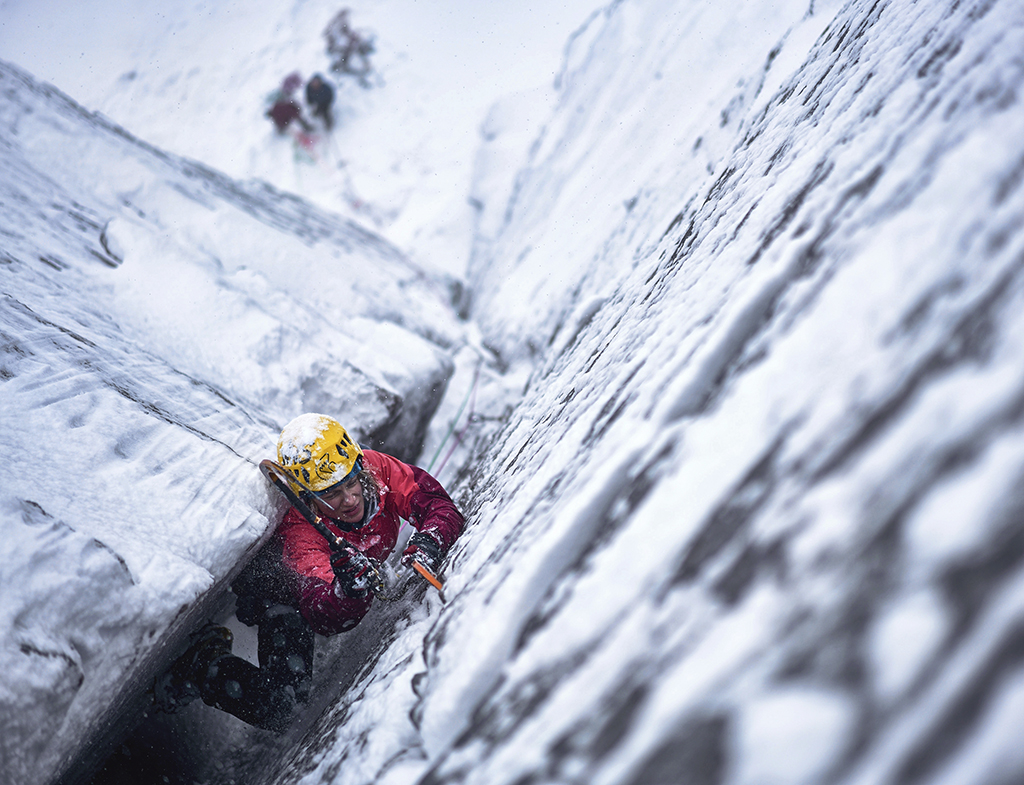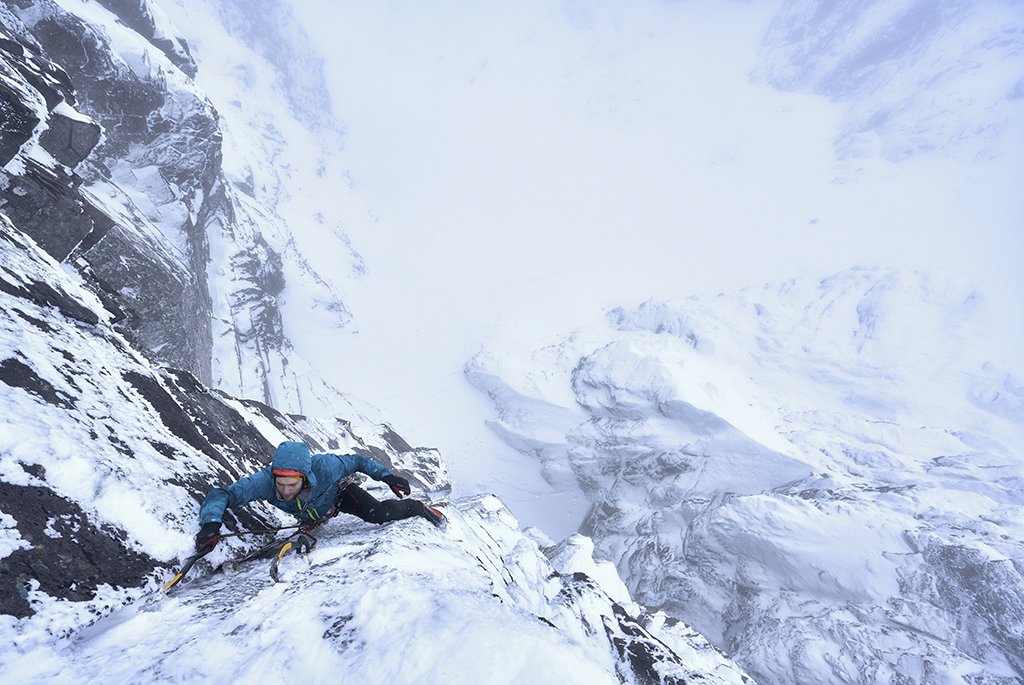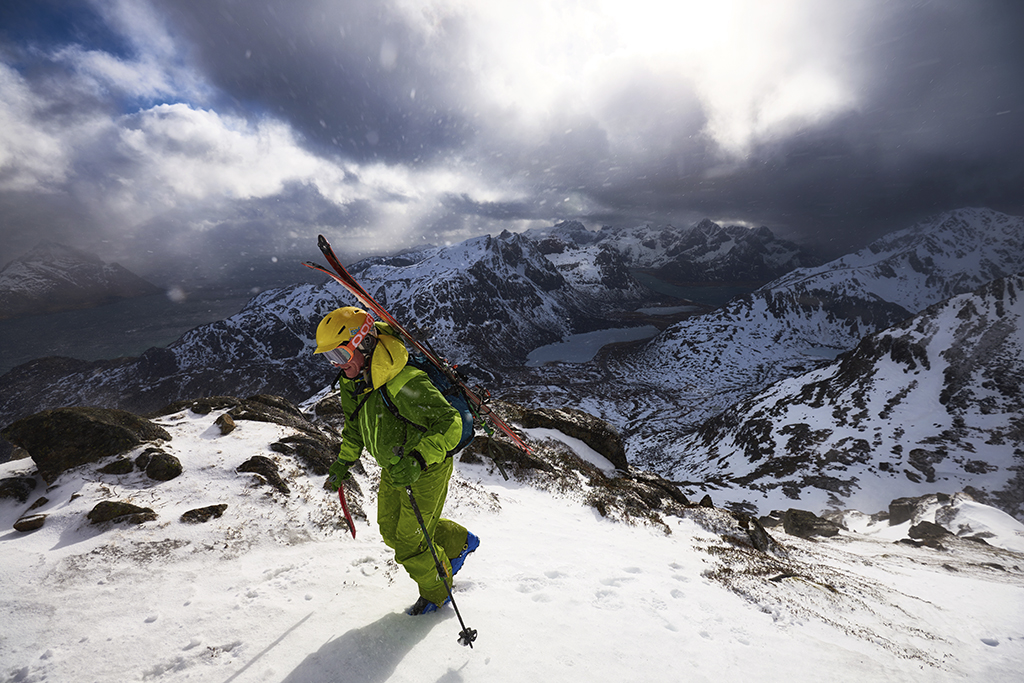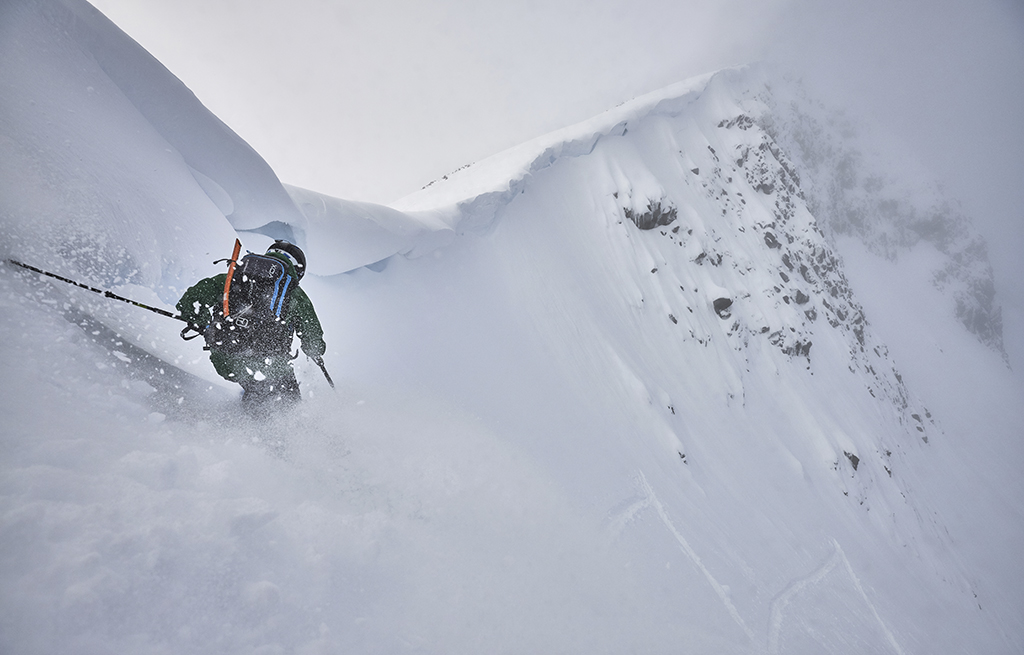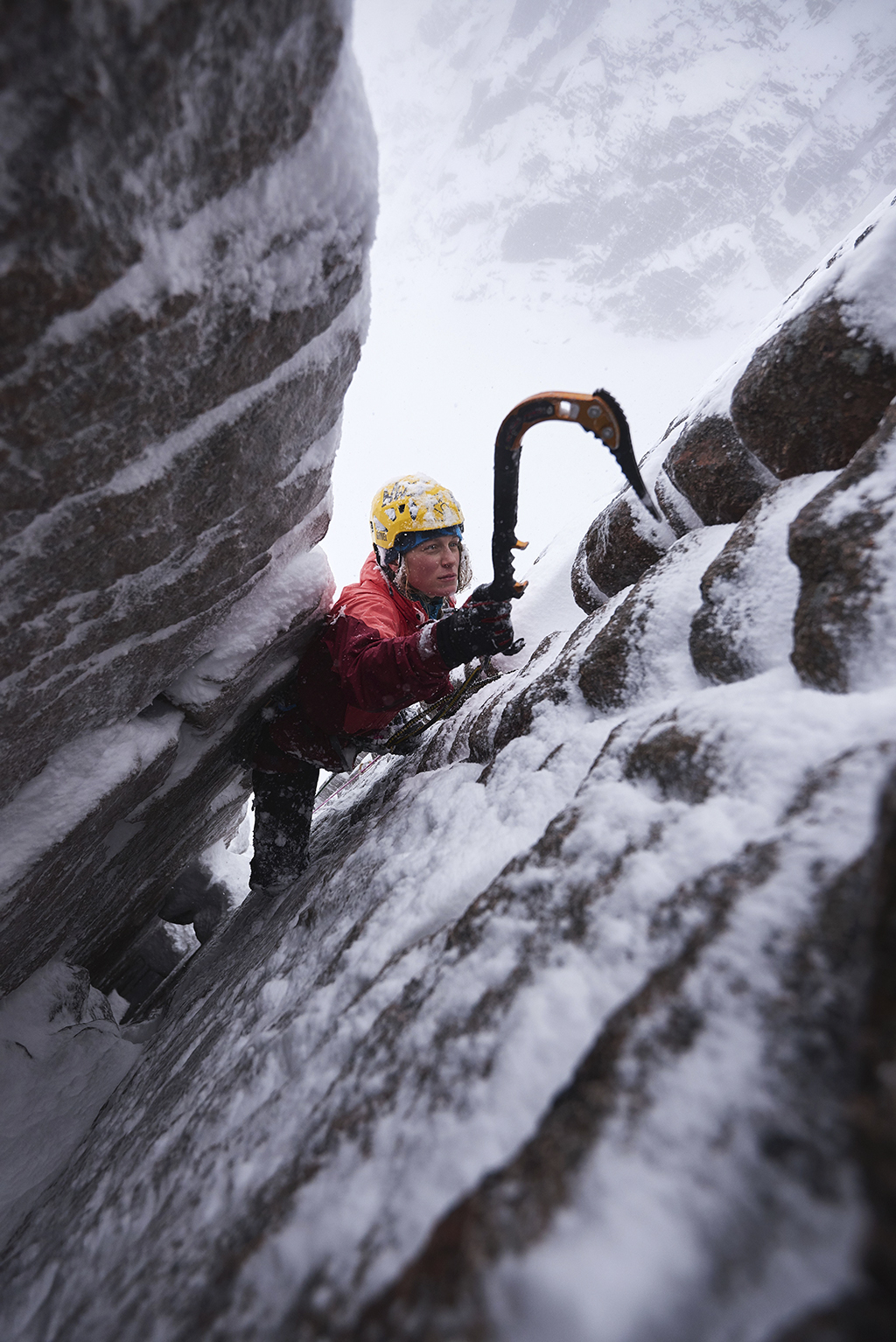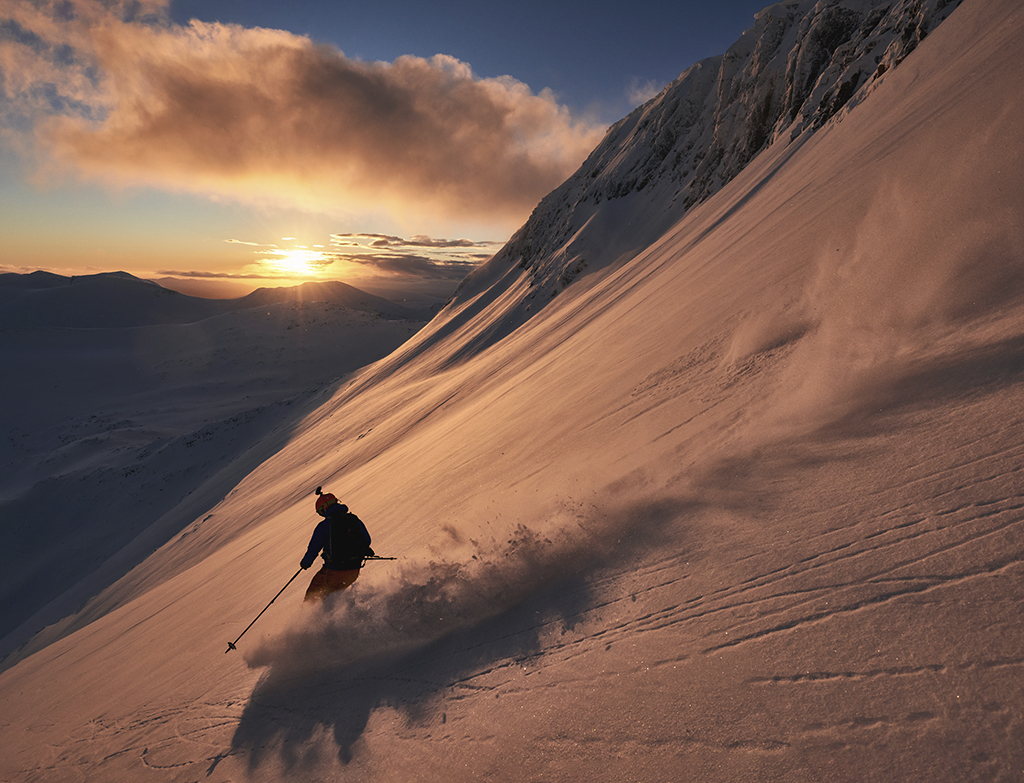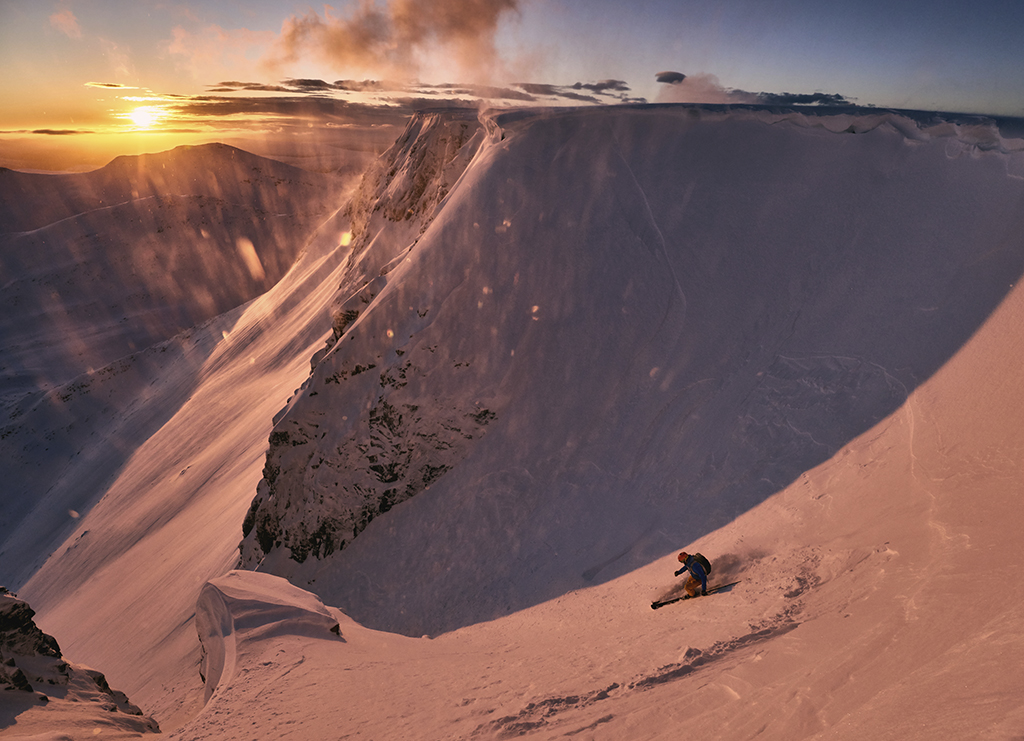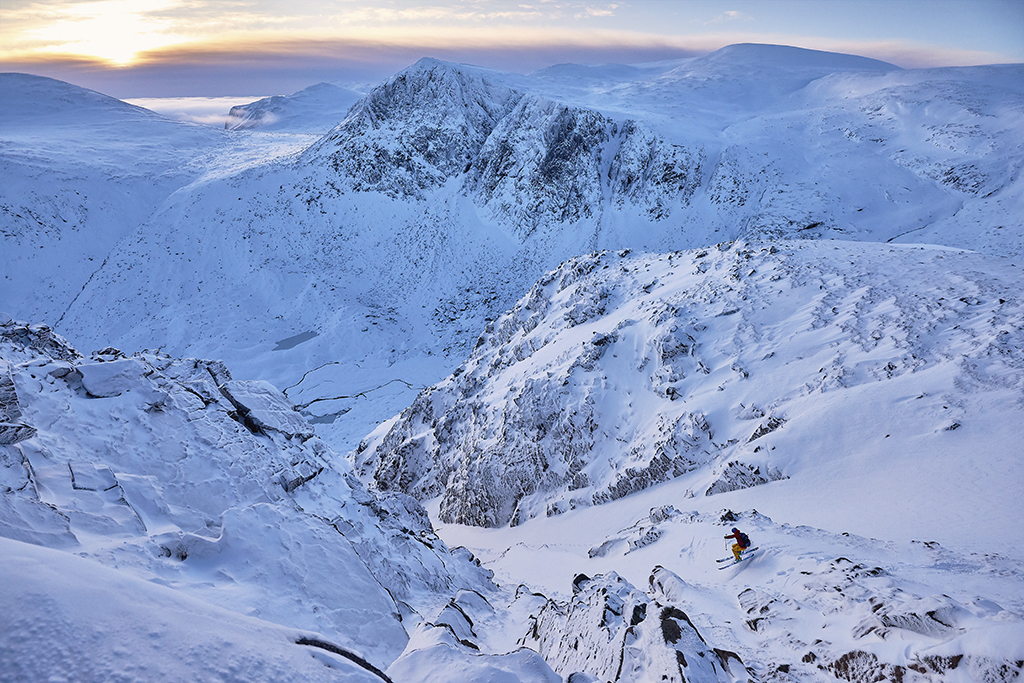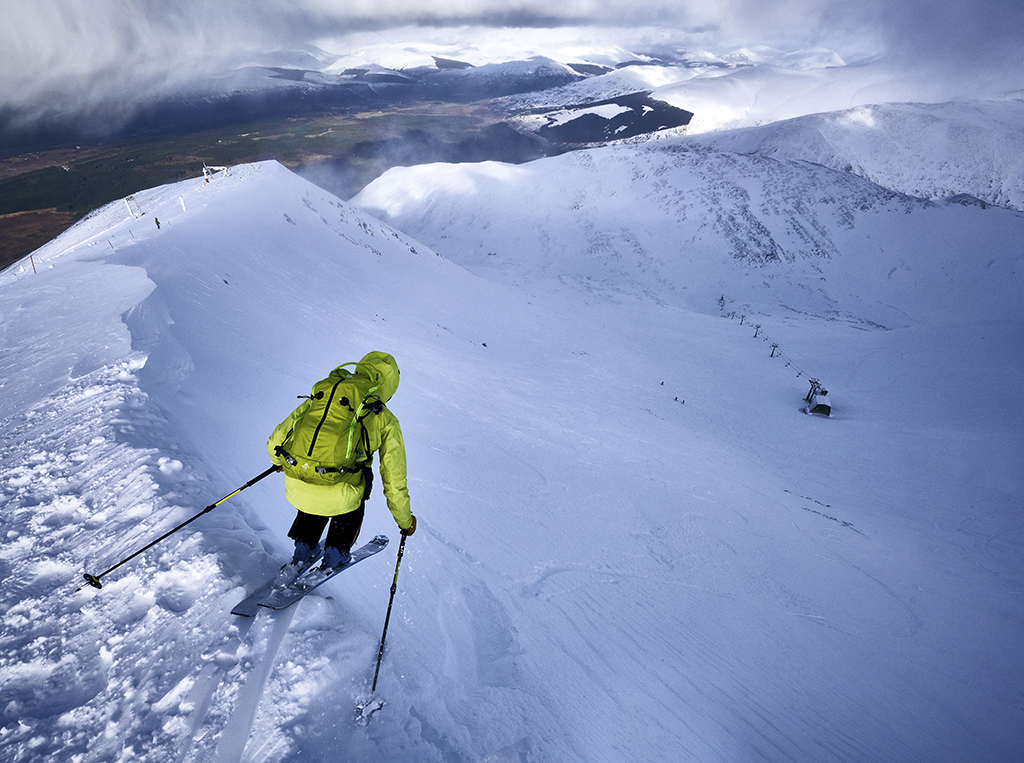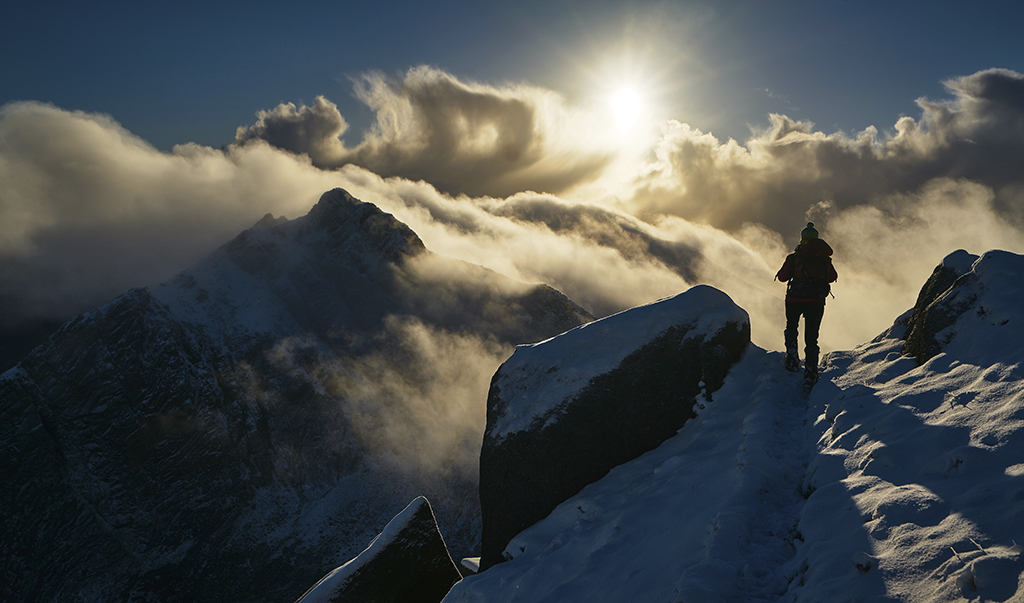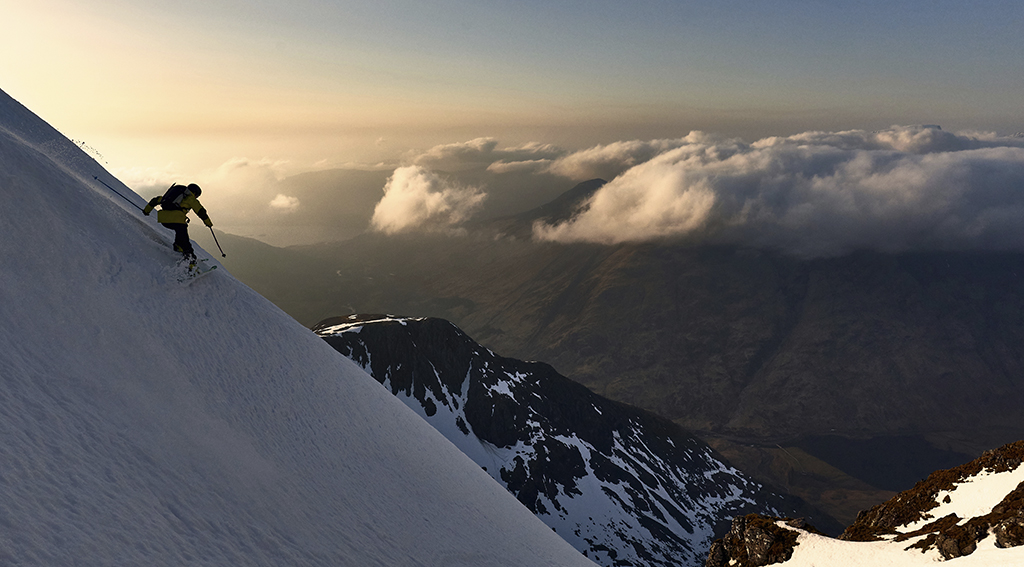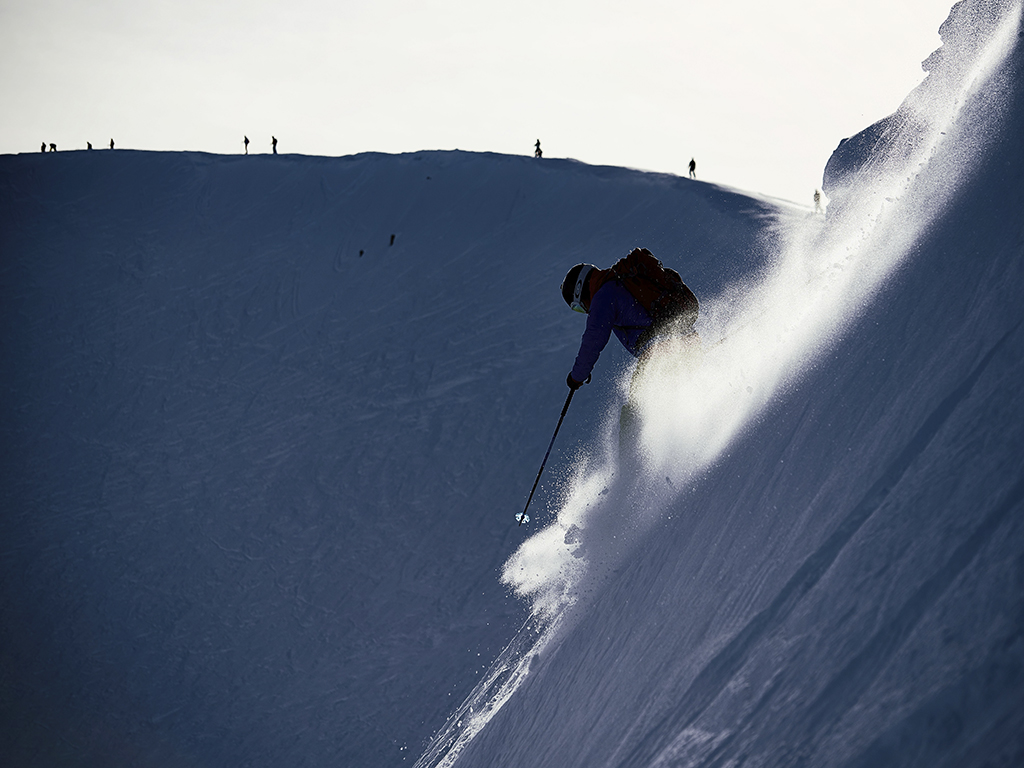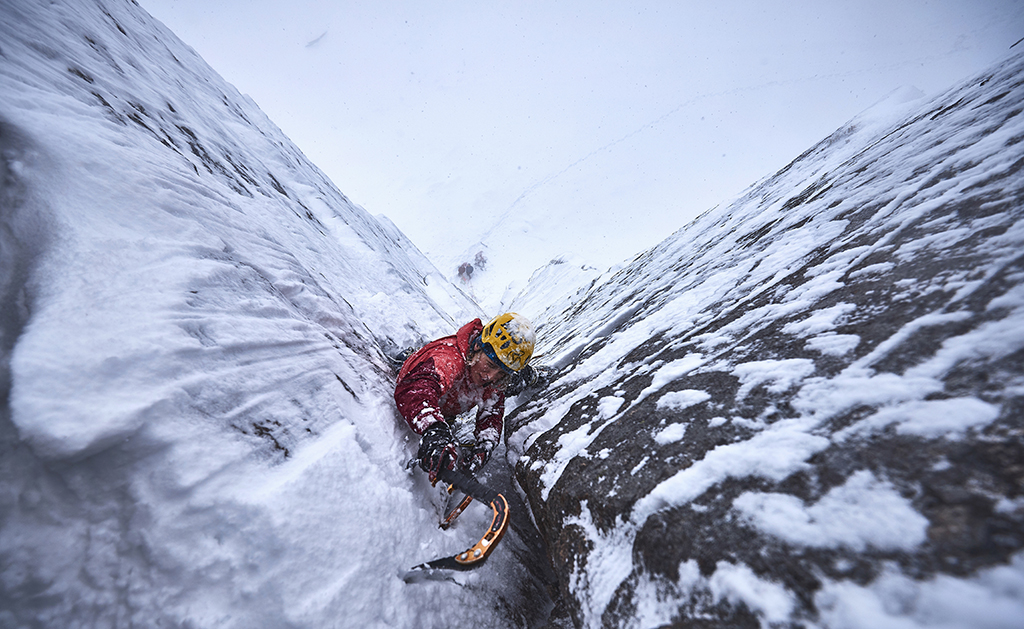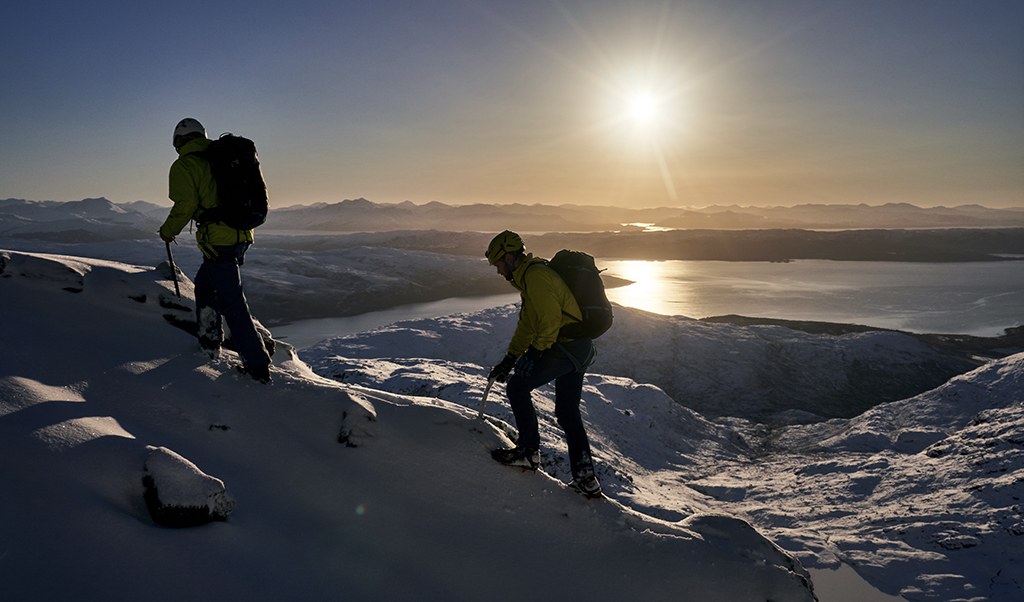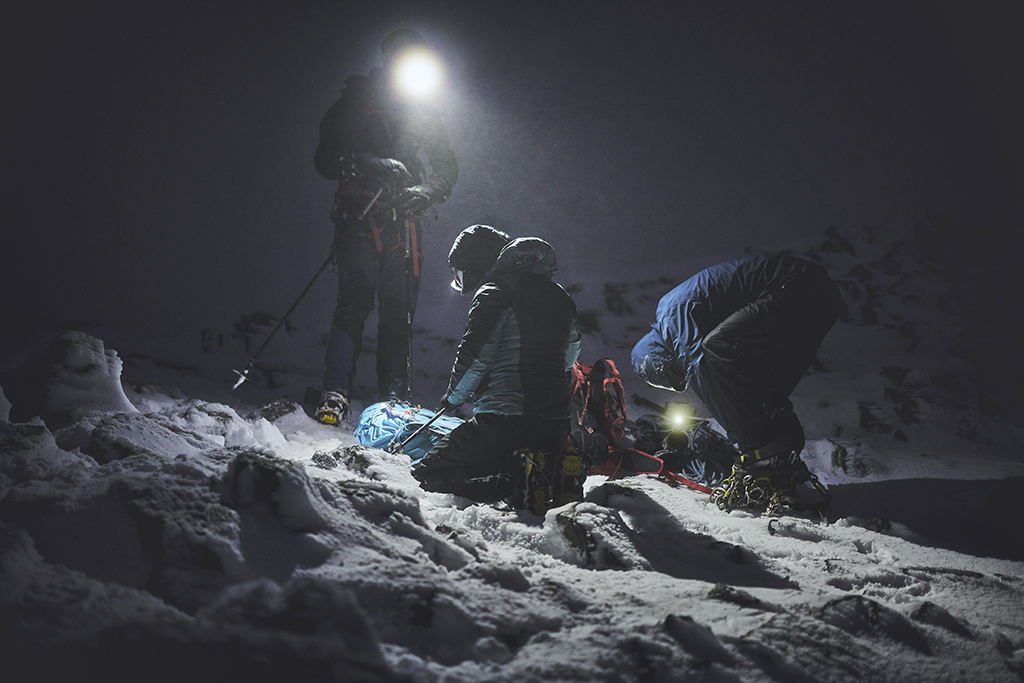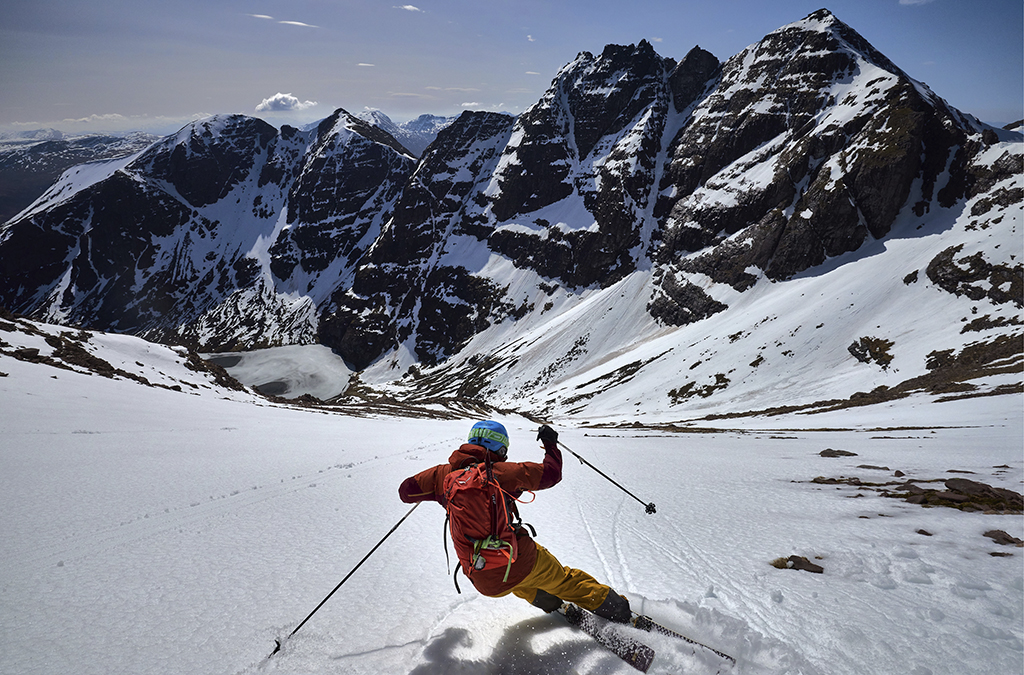Imagine the experiencing the excitement of some of the most exciting and dramatic scenery in the world – and running on adrenaline at the same time.
That’s exactly what Hamish Frost experiences on a regular basis.
Hamish is a professional adventure sports photographer, based in Scotland. After being inspired to take up mountain sports photography, he quickly became in demand and worked on projects in places such as Antarctica, the Himalayas and the Alps.
Although Hamish has travelled all over the world, the Scottish mountains in his back yard, keep him going back for more and push him to his limits.
He said: ‘I grew up south of the border down in Cambridge, before moving up to Glasgow for university. There was a scout unit attached to my school where I was lucky enough to get plenty of opportunities to get out in the mountains and away on expeditions.
‘I skied since I was around 10 or so, however only started ski touring and steep skiing in the last five years.’
Hamish’s interest in mountain photography is relatively new.
He explained that it started: ‘Around five years ago, and I’ve been doing it professionally for three years now. I find the creative process of trying to produce exciting images in tough and inhospitable environments really appealing. If it’s a particularly cold or wet day, then you’re fighting the conditions trying to look after yourself and keep your camera kit working; if the best position for a shot is half way up a cliff face, then you’ve got to work through the logistics of getting to that position.
‘I also love the physical challenge – being fit enough to lug lots of camera gear around and stay motivated to keep pushing the shutter button even when you’re exhausted, maybe also a little scared, and overall would probably rather be anywhere but there. I think the combination of all these aspects is what draws me to this genre of photography over anything else.
‘I spend a lot of time looking at forecasts, weather charts, webcams etc, trying to keep tabs on snow accumulations and freezing levels, and generally trying to build up an overall picture of what conditions are doing across the Highlands. I’ve got a list of locations and shots that I’m keen to try and capture in Scotland, but some of them require quite specific conditions. It’s a case of being flexible and ready to move quickly as soon as the conditions become good enough.’
To prepare for his shots, it means Hamish has a fair amount of exploring, climbing and getting into position by himself.
He explained: ‘In contrast to the increasingly chaotic world we live in, the mountains are quite a simple place to be. You’re just focussed on looking after yourself and achieving whatever objective you’ve set out for yourself during the day. There’s consequential decisions to be made, but no red tape to govern what you do. It can be very therapeutic.’
His interest of mountain sports includes: ‘Anything from hiking, scrambling and fell running, all the way to more technical sports like climbing, winter climbing, and mountaineering. Basically anything that allows me to get out in the hills.’
And he is especially drawn to the mountains in Scotland: ‘The scenery is quite unique, and the mountains dramatic and wild. It’s got a special charm that other places don’t have.
‘Most of the time I will have some sort of company for most of the day, however if you’re on your own, you obviously have to reign in your risk level. If you get into trouble or something goes wrong, then you’re on your own and you haven’t got anyone to help you out of that situation, so you obviously have to take more care and be more cautious.
- Suilven emerges from a winter storm (Photo: Hamish Frost)
- Powder skiing in the Northwest Highlands (Photo: Hamish Frost)
- Playtime in the Back Corries. Liam Swanson hucking a big cornice on Aonach Mor (Photo: Hamish Frost)
- Jamie Skelton and Matt Glen climbing the third pitch of ‘Darth Vader’ VII on the North Face of Ben Nevis (Photo: Hamish Frost)
- Anubis-Crux (Photo: Hamish Frost)
- (Photo: Hamish Frost)
- (Photo: Hamish Frost)
- Peter MacKenzie enjoying a final lap on the west side of Aonach Mor, as the sun sets behind Ben Nevis and Carn Mor Dearg (Photo: Hamish Frost)
- Peter MacKenzie taking flight on his way down Diagonal Gully, as the sun rises over Loch Avon and the Cairngorms (Photo: Hamish Frost)
- Pinnacle Gully (Photo: Hamish Frost)
- Inn Pinn (Photo: Hamish Frost)
- Guy Robertson and Greg Boswell on the third pitch of their new winter line on Bidean nam Bian (Photo: Hamish Frost)
- Greg Boswell on Ben Nevis (Photo: Hamish Frost)
- Greg Boswell on the exposed top pitch of Hanging Garden on Ben Nevis (Photo: Hamish Frost)
- Greg Boswell making the third ascent of ‘Anubis’ XII, one of the hardest mixed climbs in Scotland (Photo: Hamish Frost)
- Fin in full flow crossing over Meall an t-Snaim.(Photo: Hamish Frost)
- (Photo: Hamish Frost)
- (Photo: Hamish Frost)
- (Photo: Hamish Frost)
- (Photo: Hamish Frost)
- (Photo: Hamish Frost)
- (Photo: Hamish Frost)
- A Diagonal Gully (Photo: Hamish Frost)
- Dave Searle dropping into the Back Corries of Aonach Mor (Photo: Hamish Frost)
- (Photo: Hamish Frost)
- (Photo: Hamish Frost)
- Aonach Mor (Photo: Hamish Frost)
- Angela Van Wiemeersch climbing the Cairngorms classic, Savage Slit (Photo: Hamish Frost)
- (Photo: Hamish Frost)
- A Scottish winter night-time top out (Photo: Hamish Frost)
- (Photo: Hamish Frost)
‘When it comes to talking about risk, I consider myself fairly risk averse and wouldn’t go taking extra risks just to get a good photo or whatever. Having said that, mountains are obviously inherently dangerous places, so just by going out in them you could argue that you’re taking a risk! I think it’s about being sensible though and making sound decisions to minimise the risks as much as possible. So for example making sure you’re clued up on the avalanche reports and picking routes through the mountains that avoid high risk areas, avoiding areas that might be exposed to rockfall, and having a clear idea of what the weather is going to do during the course of a day (and also reacting to any changes in the weather if it deviates from the forecast at all).’
During one incident on Ben Nevis, when photographing Greg Boswell and his team, Hamish was close to getting hypothermia.
He explained: ‘I wouldn’t really say that was a particularly dangerous incident. If things had started to get really bad that day, then it’s still a situation I would’ve been able to get myself out of (evidenced by the fact that I got myself down off the hill without any problems afterwards), but there were definitely a few things I learnt that day.
‘There’s of course sometimes a balance between taking risks and getting in the exact spot you want to capture an image, and I guess it comes down to your personal acceptable risk level. Having spent quite a bit of time in the mountains I think I’ve found I’m a fairly risk averse person when it comes to these things though and I firmly stick to a mantra that no photo is worth taking unnecessary risks for. You might get away with it once or twice, but it’s a numbers game so eventually it will go against you. I’ve usually found in those kind of situations that with a bit of thought and working around the problem, you can get yourself in almost as good a position and achieve a very similar shot without taking as much of a risk.’
To read more about Hamish’s experiences, visit his website HERE.
TAGS

